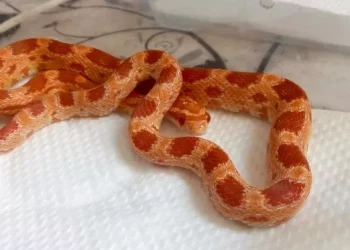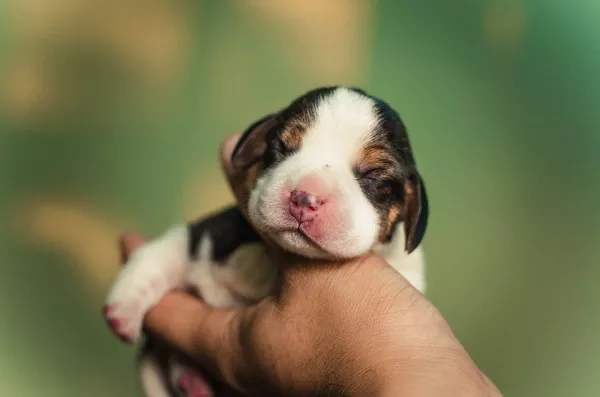The world of snakes is rich and diverse, showcasing a plethora of species with unique traits, behaviors, and ecological roles. Among these serpents, corn snakes and constrictors stand out due to their popularity in the pet trade and their fascinating biological adaptations. This article delves into the distinct characteristics, behaviors, and ecological roles of corn snakes and various constrictor species, highlighting what sets them apart while also exploring their similarities. By understanding these differences, prospective snake owners can make informed choices about which species might best suit their lifestyles and preferences.
Overview of Corn Snakes
Taxonomy and Distribution
Corn snakes (Pantherophis guttatus) belong to the family Colubridae, which is one of the largest families of snakes. They are native to North America, primarily found in the eastern United States, ranging from New Jersey to Florida and westward to Texas and Kansas. Corn snakes thrive in a variety of habitats, including forests, grasslands, and agricultural fields. Their adaptability to different environments contributes to their widespread distribution.
Physical Characteristics
Corn snakes are medium-sized snakes, typically measuring between 2 to 6 feet in length, with most individuals falling between 3 and 5 feet. They are characterized by their slender bodies, distinctive coloration, and patterns. The base color is often a vibrant orange or reddish hue, adorned with dark brown or black blotches that run along the length of their bodies. This coloration serves as excellent camouflage in their natural habitat, allowing them to blend seamlessly with the leaf litter and soil.
Behavior and Temperament
Corn snakes are known for their docile nature, making them popular choices for both novice and experienced snake keepers. They are generally calm and easy to handle, often becoming accustomed to human interaction with regular handling. Unlike some more aggressive snake species, corn snakes are less likely to bite when threatened. However, they may exhibit defensive behaviors, such as coiling up or hissing, if they feel threatened.
Corn snakes are primarily nocturnal hunters, actively searching for food during the night. In the wild, they primarily feed on small mammals, birds, and eggs. Their hunting technique involves ambushing their prey, using their keen eyesight and sense of smell to locate them. Corn snakes have a unique ability to constrict their prey, a behavior that is characteristic of many snakes, although they are not classified as true constrictors.
Reproduction and Lifespan
Corn snakes are oviparous, meaning they lay eggs. A female corn snake typically lays between 10 to 30 eggs in a clutch, which she deposits in a warm, humid location, such as decaying vegetation. The eggs incubate for about 60 to 65 days before hatching. The hatchlings are independent from birth and typically measure around 10 to 15 inches long.
In captivity, corn snakes can live for over 20 years with proper care, making them a long-term commitment for pet owners. Their relatively simple care requirements, including appropriate enclosure size, heating, and diet, contribute to their popularity as pets.
Overview of Constrictors
Taxonomy and Distribution
The term “constrictor” refers to a group of snakes that belong to various families, most notably the Boidae family, which includes the well-known boa constrictor (Boa constrictor). Constrictors are found in diverse habitats across the world, primarily in the Americas, Africa, and parts of Asia. They inhabit a range of environments, including tropical rainforests, grasslands, and deserts.
Physical Characteristics
Constrictors vary significantly in size, color, and pattern, depending on the species. For example, the boa constrictor can grow anywhere from 6 to 13 feet long, while smaller constrictors like the rosy boa (Lichanura trivirgata) may only reach lengths of 2 to 3 feet. Their bodies are generally robust and muscular, which aids in their unique hunting method of constriction.
The coloration of constrictors is equally diverse. Many species exhibit beautiful patterns that help them blend into their surroundings. The coloration often includes shades of brown, green, gray, and even vibrant hues, depending on the species. This camouflage is crucial for ambushing prey and evading potential predators.
Behavior and Temperament
Constrictors are primarily ambush predators, using their keen senses to detect prey before striking. Their hunting strategy involves coiling around the prey and applying pressure until it can no longer breathe, which is a method they use to subdue larger animals. Constrictors have powerful bodies and are capable of taking down prey much larger than themselves, a feat that requires both strength and precision.
When it comes to temperament, many constrictors are known for their relatively docile nature, especially when handled regularly. However, some species may be more defensive or aggressive, particularly if they feel threatened. The boa constrictor, for instance, can be more temperamental than corn snakes, although individual behavior varies widely.
Reproduction and Lifespan
Most constrictors are ovoviviparous, meaning they give birth to live young rather than laying eggs. This reproductive strategy allows them to provide better care and protection for their offspring in certain environments. Depending on the species, a female constrictor can give birth to anywhere from a handful to over 30 babies.
Constrictors generally have a longer lifespan than corn snakes, with some species living for 20 to 30 years or more in captivity. The lifespan depends on factors such as species, diet, and overall care.
Key Differences Between Corn Snakes and Constrictors
Hunting and Feeding
Feeding Techniques: While both corn snakes and constrictors exhibit constriction behavior, corn snakes do not rely on this method as heavily as true constrictors do. Corn snakes will often swallow their prey whole without significant constriction. In contrast, constrictors are defined by their ability to subdue prey using powerful coils.
Diet: Corn snakes primarily feed on small mammals, birds, and eggs, reflecting their role as opportunistic feeders. Constrictors, on the other hand, have a more diverse diet that can include larger mammals, birds, and reptiles, depending on their size and species.
Size and Appearance
Size: Corn snakes are generally smaller than many constrictor species. While adult corn snakes typically range from 3 to 6 feet, boa constrictors can reach lengths of up to 13 feet or more. This size difference affects not only their housing needs but also their potential as pets.
Body Structure: Corn snakes have slender bodies compared to the muscular and robust builds of constrictors. This structural difference plays a significant role in their respective hunting methods and prey capture techniques.
Coloration and Patterns: Corn snakes are known for their bright coloration and striking patterns, which serve as effective camouflage in their natural habitats. Constrictors exhibit a wider variety of colors and patterns, often featuring intricate markings that help them blend into their environments.
Behavior and Temperament
Handling: Corn snakes are often easier to handle due to their docile nature and smaller size. They are generally less likely to bite when frightened. Many constrictors, especially larger species, can be more challenging to manage, particularly if they are not accustomed to handling.
Social Behavior: Corn snakes are solitary creatures, while some constrictor species may exhibit social behavior in certain contexts. For example, certain constrictor species may be seen basking together or engaging in mating displays during the breeding season.
Habitat and Care Requirements
Environmental Needs: Corn snakes require a habitat that mimics their natural environment, including hiding spots, climbing structures, and appropriate heating elements. While they can adapt to a variety of conditions, they thrive in environments with proper humidity and temperature.
Enclosure Size: Corn snakes can be housed in smaller enclosures than many constrictors, given their smaller size. A 20-gallon tank is generally sufficient for a juvenile corn snake, whereas adult constrictors often require larger enclosures to accommodate their size and activity levels.
Lifespan and Health Considerations
Lifespan: While both corn snakes and constrictors can have long lifespans in captivity, constrictors generally live longer. This difference can impact the long-term commitment required from pet owners.
Health Issues: Both corn snakes and constrictors can face health issues related to husbandry, including respiratory infections, scale rot, and parasites. However, their specific health needs can vary based on size and species. For example, larger constrictors may be more prone to obesity if not properly managed.
Choosing the Right Snake for You
Considerations for Pet Owners
Experience Level: Prospective snake owners should consider their experience level. Corn snakes are often recommended for beginners due to their manageable size, docile temperament, and relatively simple care requirements. In contrast, larger constrictors may be better suited for more experienced keepers who can handle their specific needs.
Space Requirements: The size of the enclosure is a crucial factor. If space is limited, a corn snake might be a better choice. However, if you have ample space and are prepared for a larger commitment, a constrictor could be a rewarding option.
Long-Term Commitment: Both corn snakes and constrictors require a long-term commitment. Consider your lifestyle and whether you can provide the necessary care for potentially decades. This includes understanding their dietary needs, habitat requirements, and potential health issues.
Budget: Initial setup costs and ongoing care expenses should also be considered. Corn snakes typically have lower care costs due to their smaller size and simpler needs. In contrast, the costs associated with larger constrictors can be higher, including larger enclosures, more substantial heating elements, and dietary needs.
Conclusion
In conclusion, while corn snakes and constrictors share certain similarities as members of the snake family, they exhibit significant differences in size, behavior, habitat needs, and overall care requirements. Understanding these distinctions is essential for anyone considering adding a snake to their household. Corn snakes are excellent choices for beginners, offering a manageable size and docile nature. In contrast, constrictors, with their impressive size and unique behaviors, can provide a rewarding experience for more experienced snake owners.
Ultimately, the decision between a corn snake and a constrictor should be based on individual preferences, lifestyle, and ability to meet the care requirements of the chosen species. Regardless of choice, both types of snakes can make fascinating and rewarding companions for those willing to learn about and care for these incredible creatures.
Related Topics:


























